Maria Bartuszová
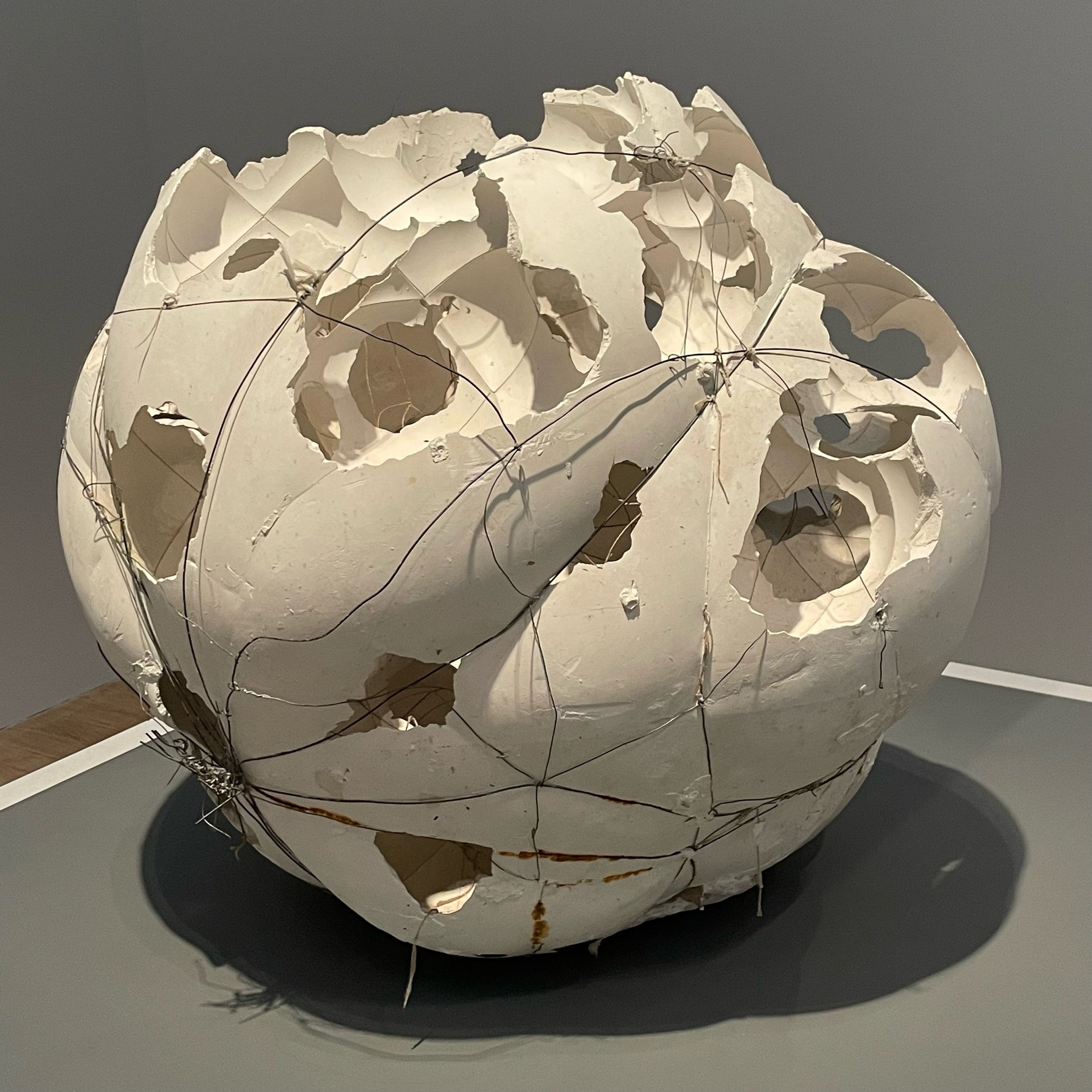
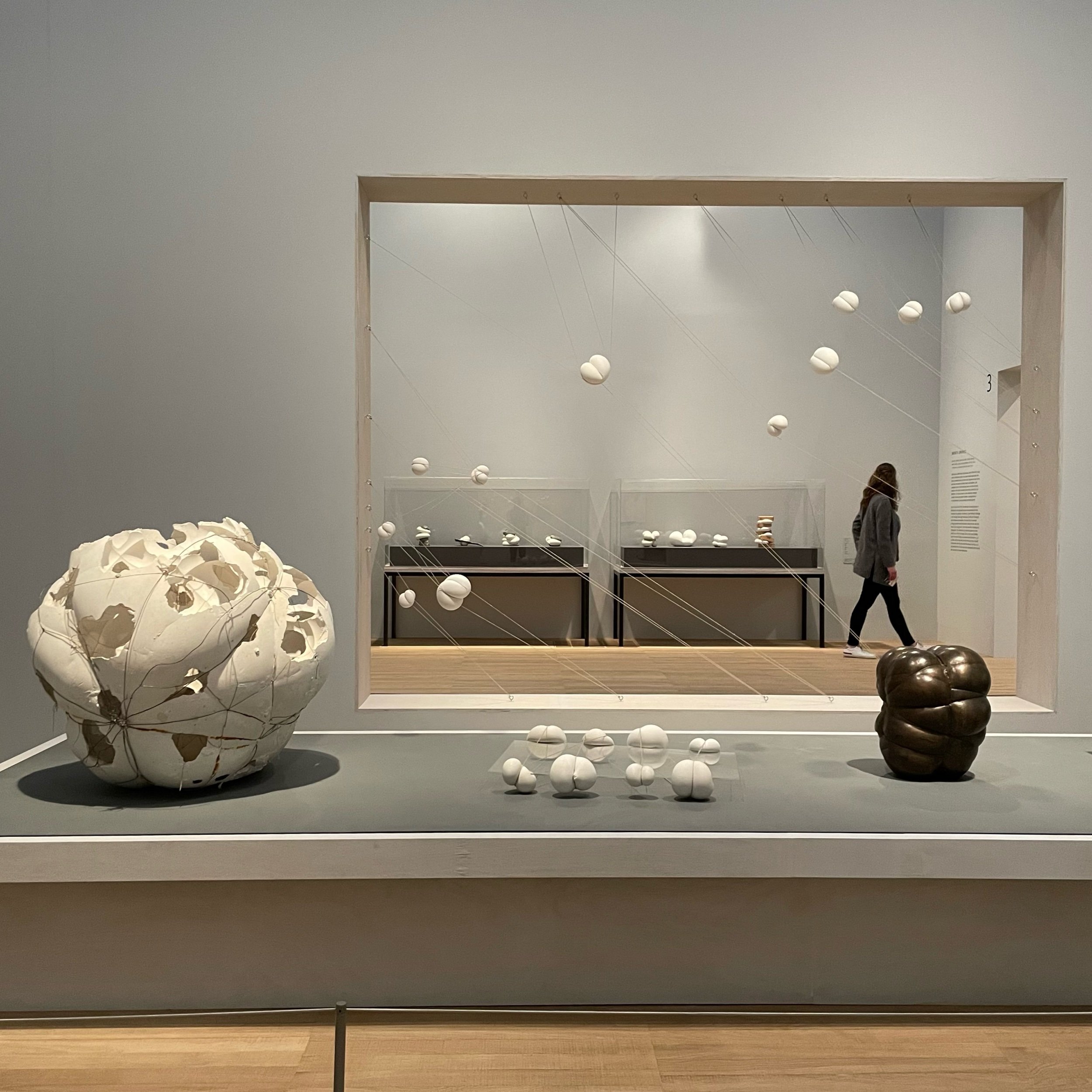
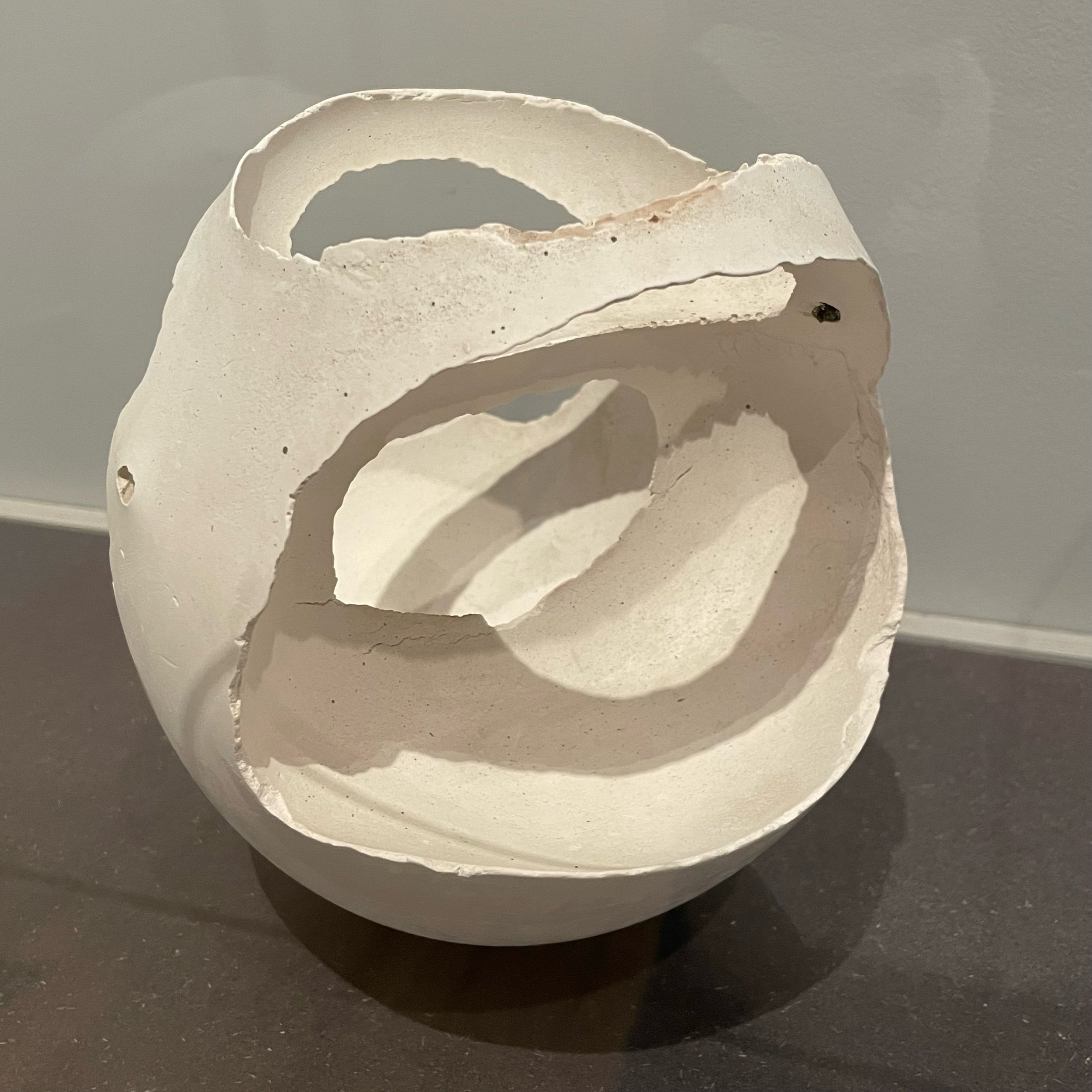
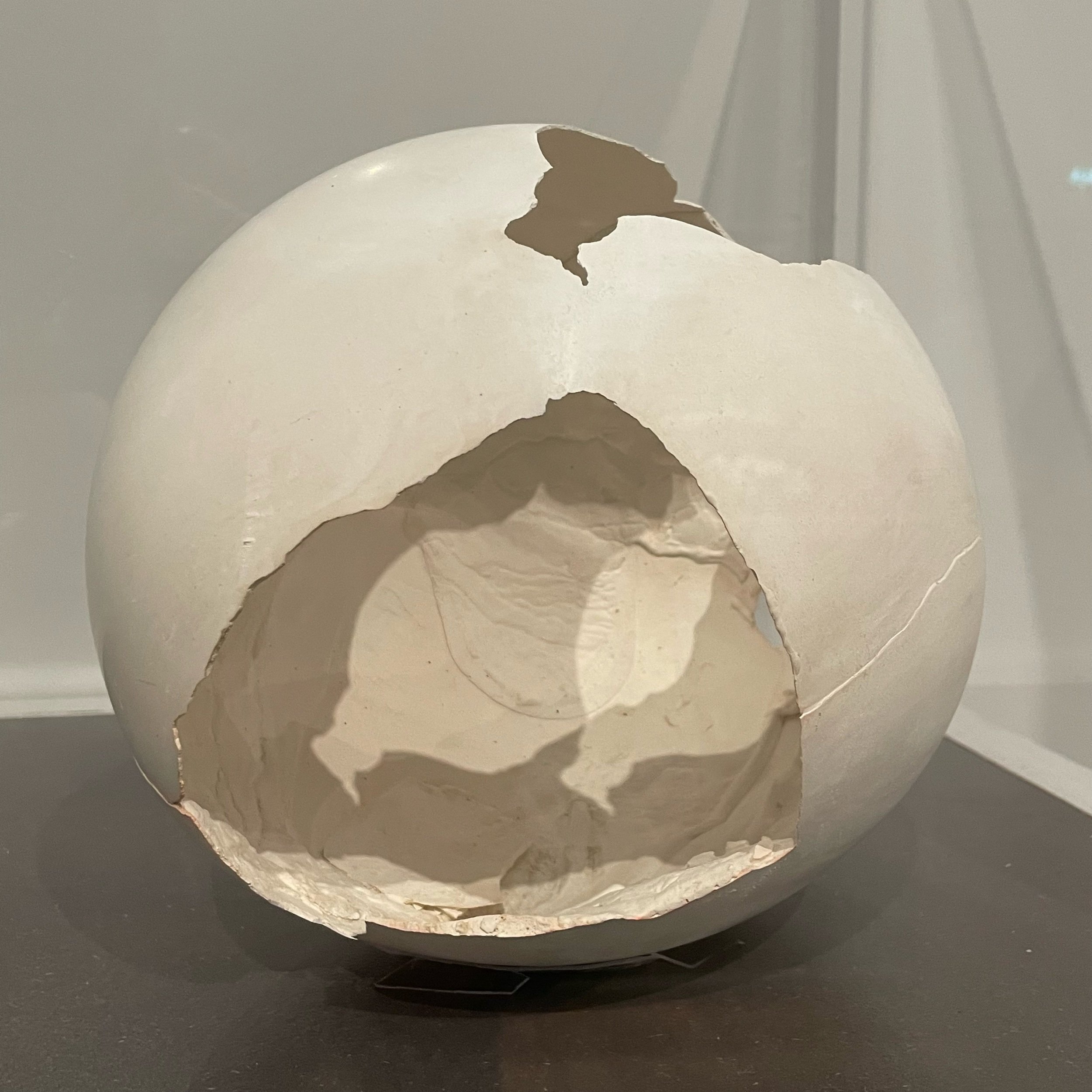

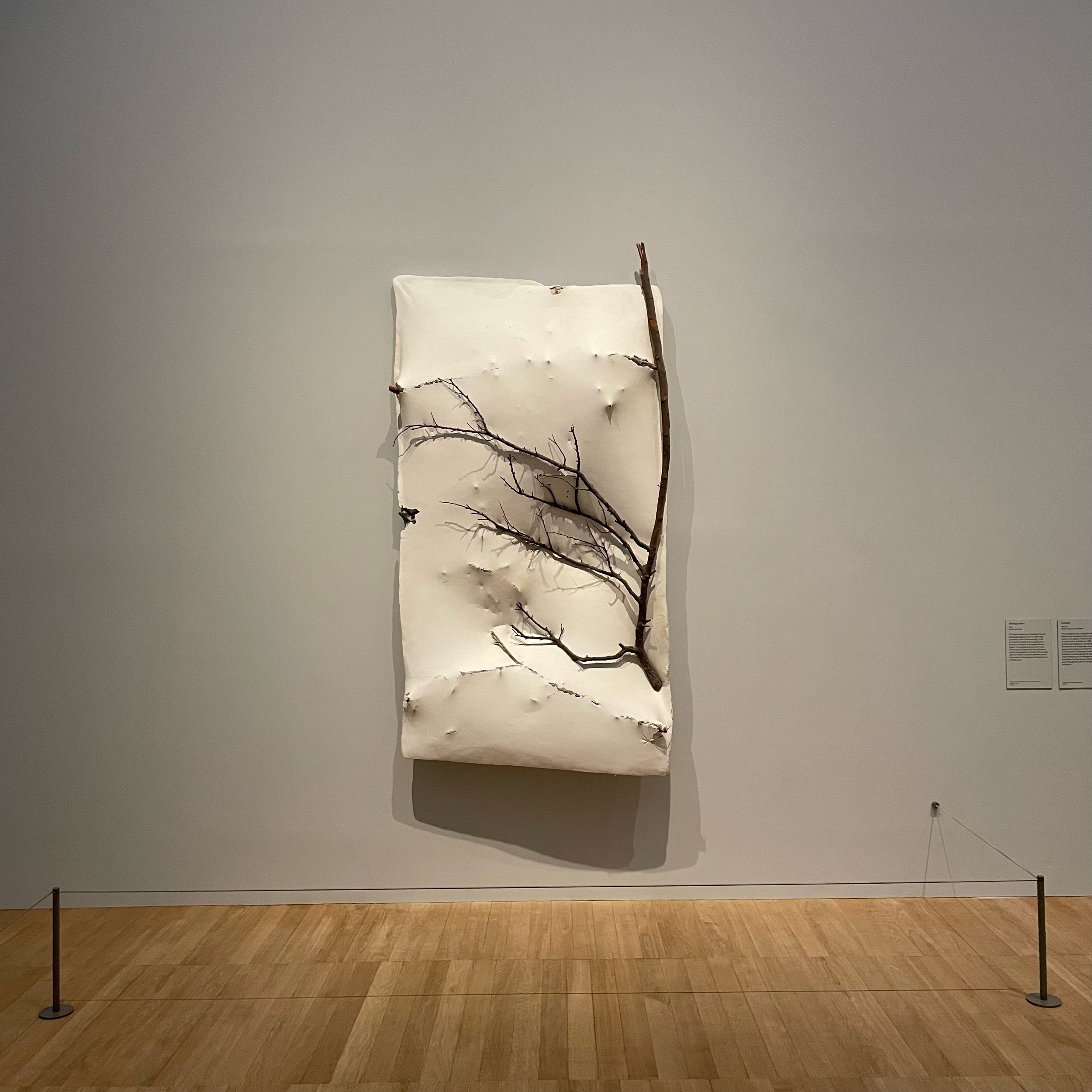
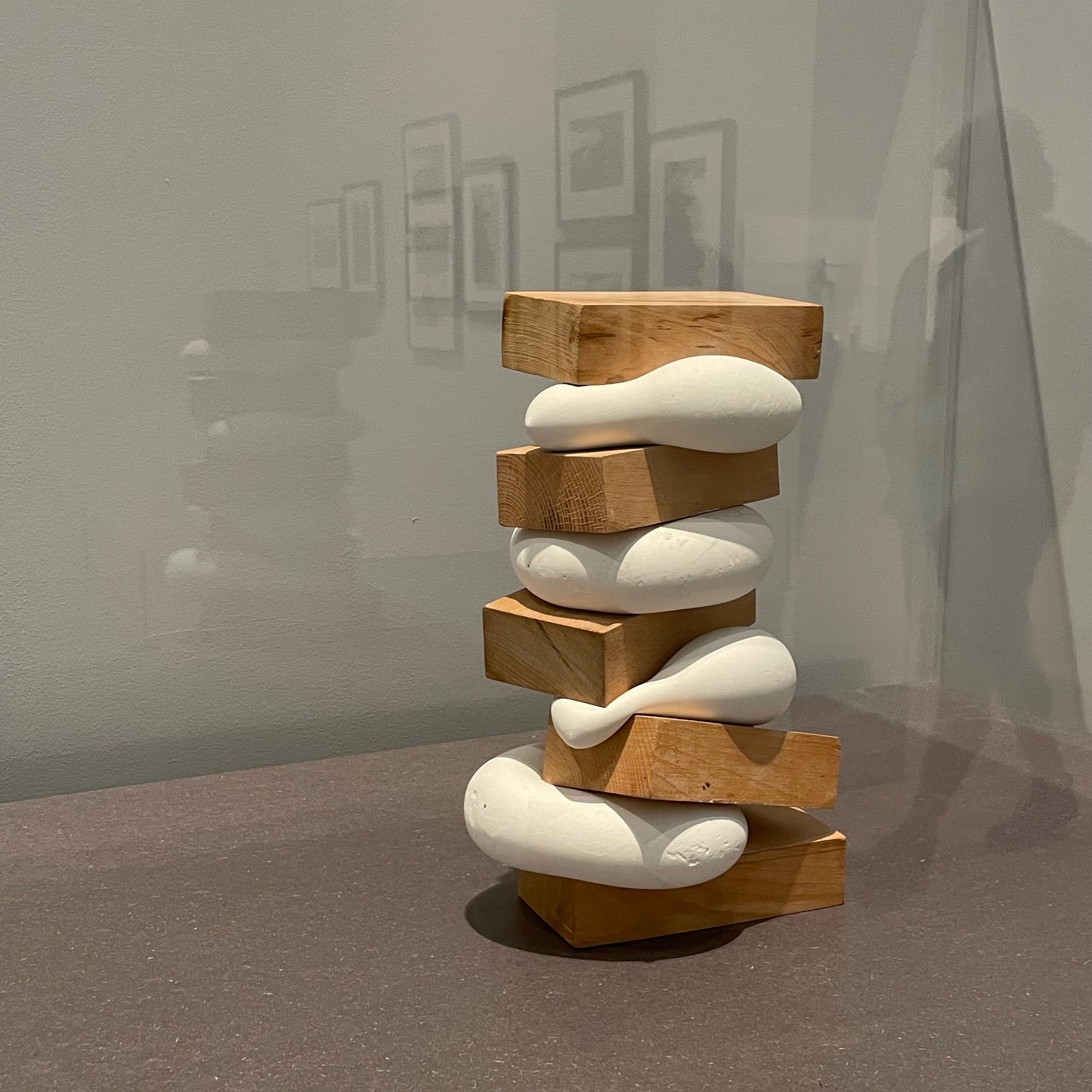
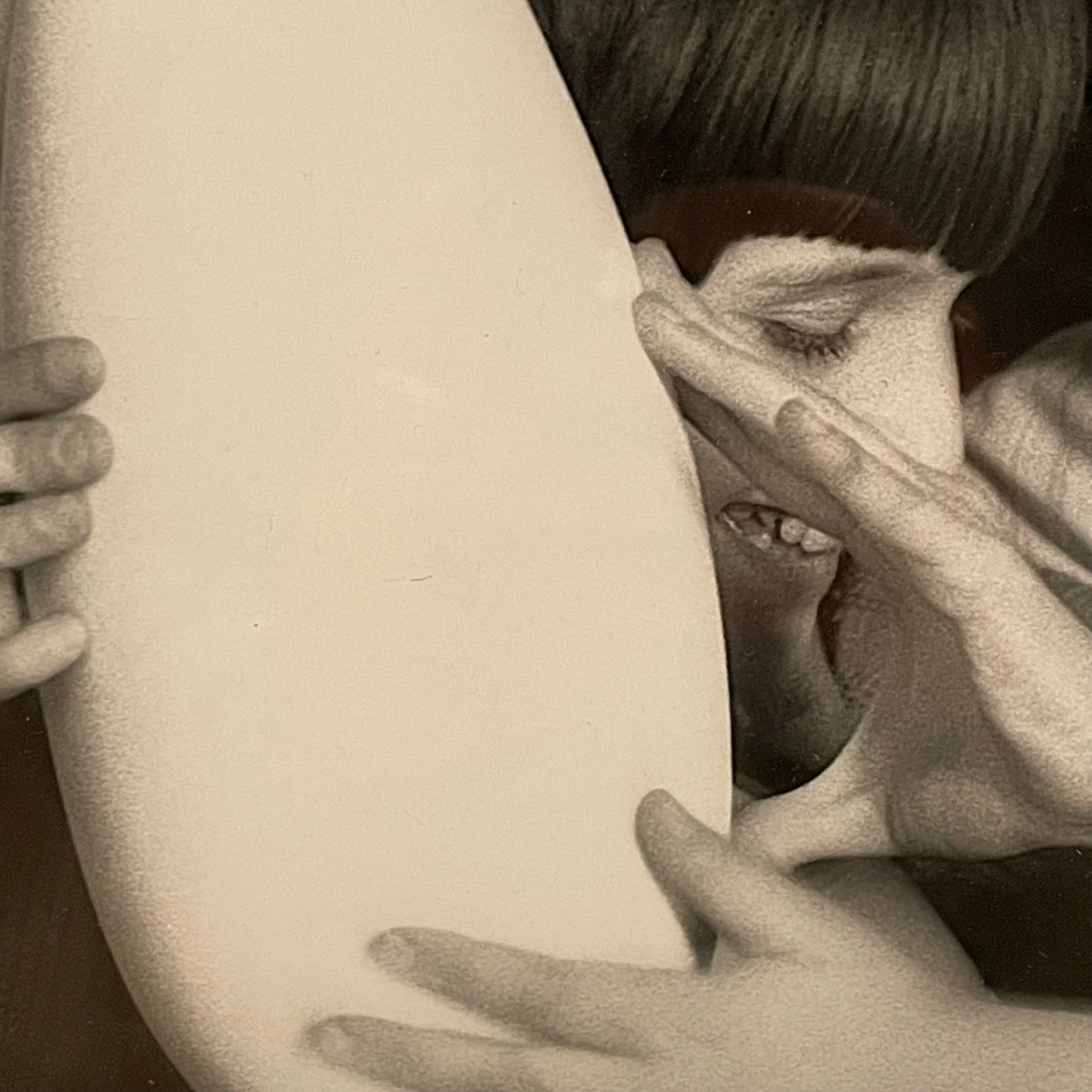
Maria Bartuszová (1936 - 1996) was a Slovakian sculptor who worked primarily in plaster, employing a variety of unconventional methods to achieve organic shapes and forms that wouldn’t look out of place in the Natural History Museum. The works vary between solid and shell, occasionally interacting with other organic items such as string or wood (Image 7). The largest in the show is titled “Melting Snow” and incorporates tree branches (Image 6).
Her “endless eggs” (Images 1, 3, 4) look more fragile than Fabergé but humans are wired for touch, so I desperately wanted to cradle one. Knowing these are made of plaster, I wanted to feel for myself if they were as light as they looked — and then compare them to Bartuszová’s more hefty solid shapes, with their sinuous curves calling out to be caressed. (Image 5)
Understandably, almost everything is safely stowed away behind glass, but a heartwarming series of photos shows blind and partially-sighted children joyfully exploring her early solids. I was fully aware of the irony of my jealousy, knowing those who were unable to see the delicacy in her works were given the most intimate way to experience them. (Image 8)
The inclusion of some metal works that look like 1980s-era Executive Paperweights reinforces the fact that sometimes an artist’s excellence is limited to certain mediums. It’s the only minor detraction in a retrospective that rightfully focuses on the evolution and refinement of her plaster magic. And the wall text is absolutely worth a read to better understand how marriage, childcare and communism all impacted the shape of this abstract art.
I really loved these works. Seeing them is what I like to describe as a ‘pleasant surprise’ of having a Tate Membership. For everyone else, I suspect the £16 adult ticket might seem like a lot for a medium sized show about an artist you’ve probably never heard of.
At Tate Modern until 25 Jun 2023
Visit the Maria Bartuszová Wikipedia page for more information about the artist.
